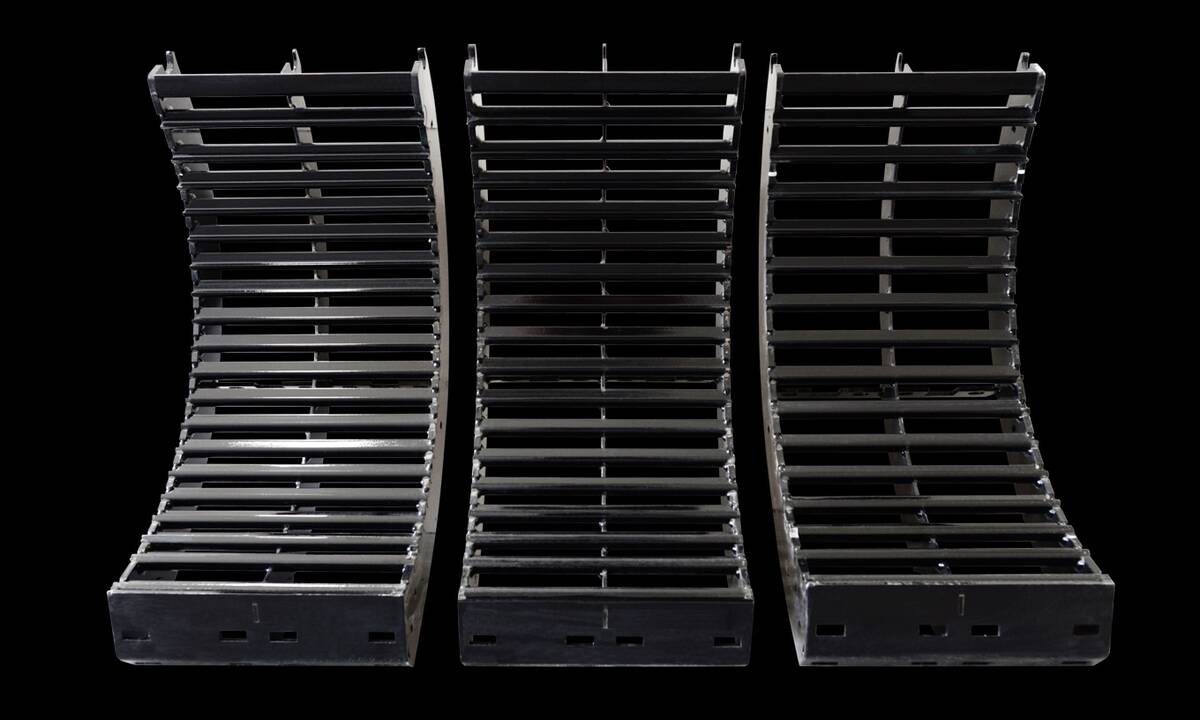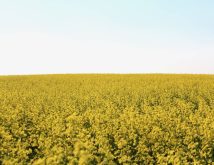“In one field the odd plant was dead and the next quarter over the field was completely dead.”
– anastasia KuBinec
Frost early June 6 caused another spring flood in Manitoba – of crop insurance claims.
Temperatures dipped below zero in many regions during the wee hours of June 6. But the lowest temperatures were recorded in the central region damaging canola, edible beans, soybeans, sunflowers and flax.
It’s another blow to farmers already struggling with delayed seeding caused by a cool, wet spring, capping six months of below-normal temperatures.
Read Also

MANITOBA AG DAYS 2026: Stacked equipment category expected at Innovation Showcase
Ten of 28 Innovation Showcase entries at the Manitoba Ag Days 2026 farm show Jan. 20-22 in Brandon are in the equipment category.
The likelihood that trade analysts are predicting the spring conditions so far will support canola prices is little comfort to farmers who face reduced yields – if they can get on their fields to reseed at all. Crop insurance deadlines are looming or already passed for long-season crops. And at press time Monday, it was raining.
The lowest official temperature recorded at Manitoba Agriculture, Food and Rural Initiatives’ (MAFRI) weather stations June 6 was -3.9C at Starbuck, where it was -3 or lower for five hours.
Lows dipped to -3 at Carman and near Miami, but were slightly warmer at Morden (-2.2), Winkler (-1.6) Morris (-1.1), and Steinbach (-0.3).
There was little or no frost in the southwest. The northwest had varying amounts of frost with Dauphin dropping to -3.5 and Shoal Lake hitting -2.
As of 1 p. m. Monday the Manitoba Agricultural Services Corporat ion (MASC) had received 300 frost-related crop insurance claims, said sales manager David Koroscil.
This spring MASC has received 1,300 reseeding claims so far – 800 of them for winter wheat. The five-year average is 660.
Frost damage can be hit and miss, varying with local conditions such as topography, crop stage and the length of time temperatures are below freezing. That’s what MAFRI oilseeds specialist, Anastasia Kubinec, saw June 7 when she inspected 800 acres of canola.
Interlake Northwest Southwest 87 61
Region
Central Eastern
Location
Morden
Dugald Arborg
Dauphin Swan River
Boissevain Brandon
Melita Pierson
Wasagaming
Average Temperature
8.7
7.7 7.1
7.9 8.1
9.6 8.4
9.8 10.3
5.9
Total Rainfall (mm)
53.6
63.0 60.8 27.5 18.4 51.8 24.3
14.8 15.4
40.8
% Normal Rainfall
94
Growing Degree Days
128
% Normal GDD
Corn Heat Units
45 226
50 218
113 46 247
121 65 248
151 64 298
119 59 262
98 89
157 168
71
52 249 68 73
38
308 330
195
% Normal CHU
60
117 136
49 42
110 47
28 29
60 68
60 76
75 74
79 85
“In one field, the odd plant was dead and the next quarter over the field was completely dead,” she said. “It really mattered how much trash the farmer had on the surface. Fields that were black seemed to be fine. The more severe the trash, the more dead plants. The tops of hills were worse affected than in valleys or side slopes.”
The Canola Council of Canada (CCC) recommends patience when assessing frost damage.
Canola plants blackened to the ground won’t recover, said the CCC’s Brandon-based agronomy specialist Derwyn Hammond. If the stem is intact and the plant is erect it might.
At this late date, a plant stand of three to four per square foot will likely produce a higher yield than a reseeded canola crop, he said.
Even as few as one to two plants can produce a decent crop, but such a limited plant population needs to be uniform across the field. Hammond recommends farmers walk diagonally across their fields taking 100 or so counts to get an accurate picture.
Weed control is critical in thinner stands, Kubinec said.
If forced to reseed, Kubinec recommends sticking with an Argentine variety with herbicide tolerance, rather than seeding a Polish type. Although Polish canola matures sooner, it doesn’t have the yield potential or the weed control of a hybrid Argentine type.
The crop insurance deadline for seeding canola is June 15 in Area 1 and June 10 in Area 2. The extended deadline, with reduced coverage, is June 20 and 15, respectively.
The deadline for seeding wheat and other cereals province-wide is June 20.
“The pulse option is you prepare for next year,” said MAFRI pulse crop specialist Bruce Brolley. “I think I’d rather deal with guys disappointed because they couldn’t grow the crop and not have that disappointment in September or October if they get froze out.”
Although there will be some damaged edible bean and soybean crops, Brolley said most hadn’t emerged when the frost hit.
At this late date even a half-normal plant stand it would be better to keep it than rip it up, Brolley said.
Seeding has been most delayed in the Altamont, Darlingford, Manitou, triangle due to wet soil and the lack of heat. But air seeders were working past dark with the aid of auto-steer and a full moon June 5 trying to beat Monday’s rain.
Some Manitoba fields might not get seeded by crop insurance’s June 20 deadline, said the Canadian Wheat Board’s (CWB) director of weather, crop surveillance and market analysis. But it won’t be nearly as bad as 2005 when 1.4 million acres of Manitoba farmland didn’t get seeded, triggering $58.3 million in excess moisture claims and contributing to a record crop insurance payout of $295.2 million.
Meanwhile, drought con-d itions in west-central Saskatchewan and central Alberta is putting crops there at risk, Bruce Burnett said.
“Things are going to have to turn around pretty quickly and we’re going to need some help in the fall for an open fall window like last year,” said CWB agronomist Mike Grenier.
On June 5 the daytime high in many places in Manitoba set a new low. Morden’s temperature peaked at 9C – 14 degrees lower than normal.
During May most of Manitoba received just half to two-thirds of the normal Growing Degree Days (GDD) (a measure of the accumulation of heat useful for growing a crop).
Morden received 128 – 52 per cent of normal. It was the lowest accumulation in nine years, even below May 2004, which turned out to be the coldest growing season on record. That year there was a bumper crop of wheat, but many heat-loving crops like corn were written off. [email protected]















